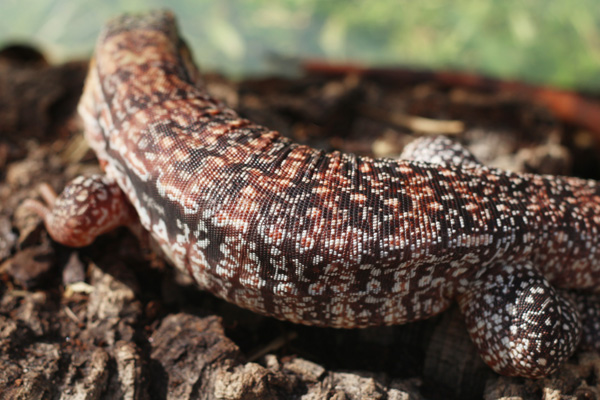Since we officially started hurricane season on the first of this month, and in light of the tropical storm we've already had and all the tornadoes touching down across the country, I thought it was a good moment to remind everyone to have an emergency kit for all their pets and family members ready.
You never know when you may find yourself in a situation where you and your family needs to pack up in a hurry and evacuate. It could be a tornado, a hurricane, a flood, etc. It happens more often than anyone thinks and in the 11th hour it is too late to get together good kits for every member, especially the pets. So it's vital that everyone (adults, children, and pets) have backpacks or plastic totes ready to grab in seconds, throw them in the car, and leave.
The Red Cross website has great ideas for what to put in backpacks for your human family members, from clothing and toiletries to emergency supplies, so I will not go into that here. But I will talk a bit about pets, focusing on your reptile pets.
Per Red Cross recommendations, you should have what you need to be OK at least 3 days, so that's what we'll base our kit on.
WHAT YOU'LL NEED
1. A Container. You will need somewhere to pack the supplies into. I like plastic storage containers with lids that are locked into place. They are easy to stack in a car, are relatively water-proof, you can see what's inside if you choose a clear container, and they're easy to write on (your name, what's inside, etc.) You could use a backpack too, however.
2. Temporary Cages. Whether you have a chameleon, a frog, a hamster, or a parakeet, you'll need somewhere to put them safely for the duration of transport. It'll give you somewhere to house them in if you need to spend a couple nights in a hotel, too. For chameleons I love butterfly cages (available anywhere from Amazon.com to your local Walmart) because they collapse flat, provide a lot of airflow, and you can spray chameleons through them with water. I also have another container for immediate transport, which you could use as temporary housing for other animals like geckos or snakes - Tupperware containers with lots of small holes drilled in the lid. You could use snake bags as well, or spend the money on Kritter Keepers. All good options for temporary, compact housing. Use one per pet!
- For your chameleon, you'll need something to climb on once you're settled somewhere safe and can pop out the butterfly cage. I recommend fake vines from the Dollar Store. You don't need anything fancy, just enough to add climbing surfaces and leaf cover. These vines also fold away nicely in a plastic container.
3. Water. Like you would for people, you should pack a couple water bottles in your pet kit. For chameleons, make sure to bring a smaller water sprayer, and for other pets bring something to pour the water into such as a tiny bowl or deli cup.
4. Towels/Sheets and Paper Towels. You should always have at least one towel or something else that is absorbent or can be used to cover up the temporary cages. Remember that animals in an unfamiliar place, like a hotel or an emergency center will be terrified, do them a favor by covering up their temporary cages as much as possible. I also keep a roll of paper towels in there as well - it's just something that always comes in handy.
5. Hot or Cold packs. You never know what the weather may be doing at the time of an emergency. It could be a 98F day in South Florida or it could be a 10F day in England. You just never know. So I recommend ordering a few hot and cold packs online, used to ship reptiles. Both packs have an estimated life of 48 hours, but I would have several of each.
- Note: You don't want to put these heat packs directly in contact with any animal, as they could burn or freeze themselves. But you could put them outside of the temporary container and cover with a towel, to warm or cool the air beneath it. How warm or cold will depend on your specific species and their limits. You do not need to replicate ideal temperatures if you can't, just keep them within a comfortable, survivable rage.
6. Any Medications. This won't apply to most reptiles, but if your pet needs to take any medication for something, have it within reach so it is easy to grab, throw into the emergency kit, and take with you. You could put some calcium supplements in a little zip lock and keep it in the kit, but I feel that it's not vital unless your animal is undergoing treatment for MBD or is gravid.
- Someone among you should have a first aid kit in their backpack, and many of those items will work on pets as well. Stock up with some Polysporin, for example, which is better than Neosporin on reptiles in case of any cuts. Remember to keep any injuries dry, clean, and protected.
You'll notice that I did not mention food. This is because A, you shouldn't be spending vital time trying to scoop out crickets or worms into a container in an emergency, and B, most reptiles will be fine not eating for several days (and they may not eat at all in a new, stressful environment.) Get yourself settled and safe, and then worry about finding a pet store to get crickets.
 |
| What you'll need in your kit. Everything should fit comfortably into the large plastic container. All photos and products belong to their respective owners, none are mine. |
WHAT YOU'LL DO
1. Have everything ready to go. Put everything into the large plastic container (all the towels, paper, Tupperware containers and butterfly cages, etc.) Also add a card with your name, cell number, another emergency contact, and an email. You never know if you'll become separated from your pets, and chameleons don't wear tag collars. Have this ready ahead of time, obviously.
2. In An Emergency you want to grab each pet and put them into their respective Tupperware container. That (and any meds) should be the only thing you have to grab before you go, as far as your reptiles. Put all of the pets into the large plastic container, close it, and pack it into the car.
3. Once You Are Safe you can unload all the animals out of the large plastic container and set up their better temporary cages. Try to keep them and yourself as comfortable and safe as possible.
I hope that everyone stays safe always, and that any evacuation is quickly over and your homes are safe to return to. But it always pays to be prepared if you want to keep all members of your family safe. Please never abandon pets at home alone in an emergency, most do not survive through a flood, hurricane, or other serious event.
I will add photos tomorrow.












Thank you for sharing this! It's very important to take care of your animals in emergencies. I'm very grateful for my Vancouver animal emergency place that helps to take care of my dog last minute. I really appreciate all this information!
ReplyDeleteIt is natural fact that pets are also the part of this earth and our daily life too. We should save them too in case of disastrous or other bad situations like storms. Our Pet’s Emergency Kits is not much different by comparison. It should contain enough food and water to last a week in airtight containers to insure it stays fresh. We should replace this food and water every six months.
ReplyDeleteThis is because the people who run pet stores have vast experience in taking care of pets, which include knowledge on which brands of pet supplies can give the best results. dog toys
ReplyDelete